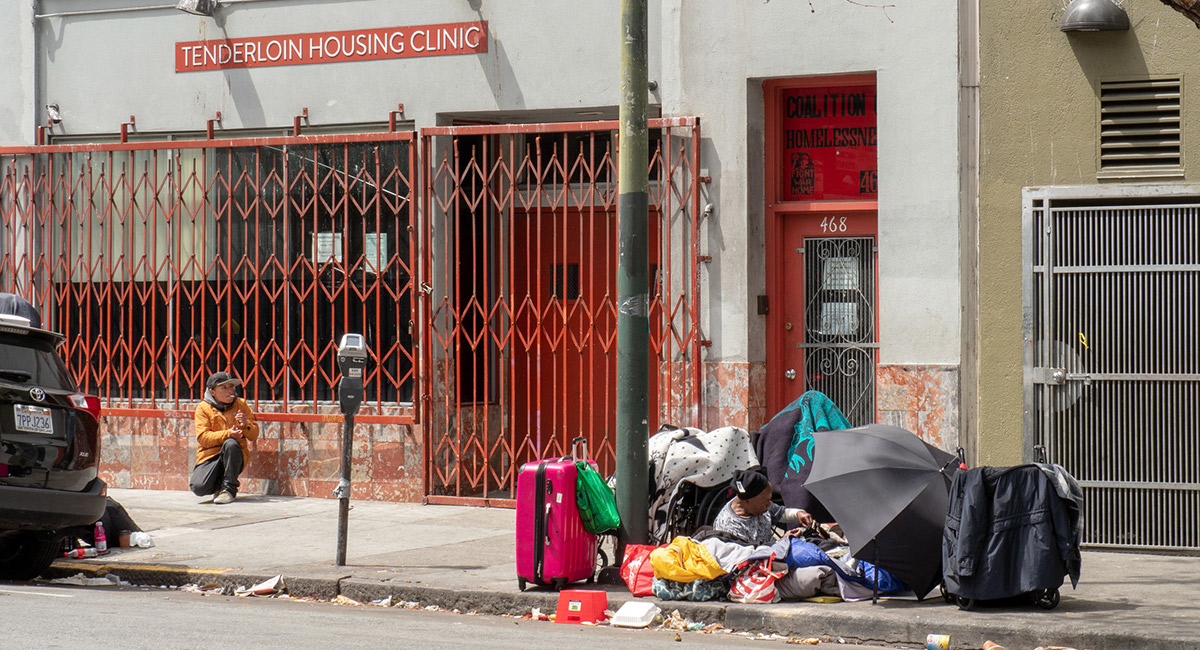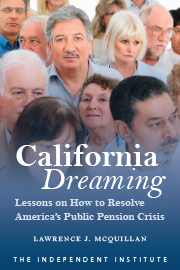Politicians, government officials, and academic “experts” from coast to coast have been insisting for years that homelessness is a “national crisis,” as California Gov. Gavin Newsom and Los Angeles Mayor Karen Bass both claim. That is a misdiagnosis, deflecting responsibility away from cities that should fix their own problems.
Every case of homelessness is tragic and complicated. According to new data, however, homelessness has reached crisis proportions only in a limited number of areas across the country, especially in California.
The U.S. Department of Housing and Urban Development’s recently published “Annual Homelessness Assessment,” a report sent to Congress in December, found that some 582,500 people experience homelessness across America on any given night. That is about 0.17 percent of the U.S. population.
A rule of thumb is that the number of people who cycle in and out of homelessness throughout a year is two to four times the “point-in-time” count. Even applying the larger multiplier of four, the number of people experiencing homelessness during a year is still less than 1 percent of the population. Those numbers do not indicate a national crisis.
In 2022, HUD divided the country into 387 “continuums of care” for reporting and funding purposes—that is, areas within which groups coordinate homelessness services. Thirteen percent of the continuums of care had fewer than 200 people experiencing homelessness, 43 percent had fewer than 500, two-thirds had fewer than 1,000 homeless people, and 84 percent had fewer than 2,000. These numbers describe a manageable problem across most of the country and a more serious problem—even a crisis—in a limited number of specific locations.
Nationally, California has the most people experiencing homelessness (171,521). And, not surprisingly, seven of the 11 cities and suburbs with the greatest numbers of homeless also are in California: Los Angeles, San Jose, Oakland, Sacramento, San Diego, San Francisco, and Anaheim. The other four metro areas are New York City, Seattle, Phoenix, and Denver.
All of these cities, with the exception of Phoenix and, until recently, Anaheim (whose seven-member city council, following last year’s election, now consists of four Democrats, two Republicans, and one independent), are reliably “progressive” in reliably blue states—meaning they tend to share views and adopt similar homelessness policies that have resulted in concentrated urban areas of human misery with names like The Jungle (San Jose and Seattle), The Zone (Phoenix), Skid Row (Los Angeles), and the Tenderloin (San Francisco).
The progressive political class believes that an insufficient supply of housing is the primary cause of homelessness. In truth, homelessness is overwhelmingly caused by substance abuse and mental illness, typically resulting from untreated personal trauma.
Misdiagnosing the problem has caused progressive cities and states to pour billions of taxpayer dollars into housing in an attempt to provide “affordable” or “permanent” housing for every homeless person. That is an expensive fool’s errand because people continually cycle in and out of homelessness, in and out of government programs, and in and out of supposed “permanent” housing, when root causes are left untreated. Some—too many—will also die.
Many of these cities have compounded their homelessness problems by recklessly handing out cash assistance, effectively subsidizing the self-destructive behaviors. After just one month of residency in San Francisco, for example, a newcomer is eligible to receive benefits of up to $968 a month, which often is used to fuel drug and alcohol abuse. Cash assistance and the prospect of permanent housing draw people into these cities like magnets. Misguided tolerance of the lifestyle adds to the problems.
Government officials have uncaringly sacrificed certain neighborhoods to the problems accompanying homelessness. Parks, sidewalks, alleyways, and other public spaces in those neighborhoods have become dangerous “shelters-of-first-resort,” unsafe for housed and unhoused residents alike. The quality of life in those neighborhoods understandably plummets.
Contrary to what many politicians and homeless advocates claim, homelessness is not a national crisis—it is a crisis limited to a relatively few cities, most notably in California, where progressives refuse to accept what their eyes must tell them: that their policies have failed.
But this can be fixed.
Officials must recognize that behavioral issues are the primary cause of homelessness, and that cash assistance subsidizes self-destructive behaviors. Officials also must recognize that public spaces have public purposes and that providing locations for makeshift tent cities isn’t among them. Enforcement must be consistent across a community.
Housed and unhoused residents alike must be protected from crime. And nonviolent people experiencing homelessness must be directed off the streets to designated safe sites staffed by trained professionals who can provide them with, or direct them to, the individualized treatment, services, and job training they need.
Those simple principles would reverse homelessness where it now thrives. Everything else is political showmanship.










